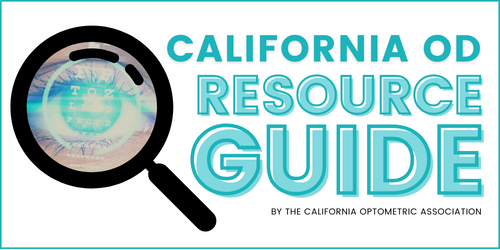Can early glaucomatous field defects appear next to fixation? Absolutely

|
Dr. Ozawa graduated from the University of California, Berkeley School of Optometry in 2001. In the following year, he completed a residency in Ocular Disease at the same institution. Presently, Dr. Ozawa is an Associate Clinical Professor of Optometry at Berkeley, teaching both in clinic and the classroom. He received the Michael G. Harris Classroom Teaching Award from the graduating class of 2014 and the Excellence in Optometric Education Award from the California Optometric Association in 2015. Dr. Ozawa also sees patients in private practice at Eaton Optometric Group in Tracy, California. In his free time, Dr. Ozawa enjoys fly fishing and fly casting. He is the Vice President of the Oakland Casting Club, sharing his passion for fly fishing by coordinating monthly fishing trips to various destinations across Northern California. |
The Classical Picture of Visual Decline in Glaucoma
Traditionally, visual decline in glaucoma has been characterized as starting in the periphery: either in the nasal area 15° to 30° from fixation or in the arcuate area 10° to 20° from fixation. Glaucoma has also been thought to spare central visual function until the final stages.[1] However, this latter idea is slowly changing.
Evidence that Glaucoma Can Start Centrally
In early glaucoma, color vision, which is largely mediated by the fovea[2], is abnormal.1 These color deficits may even precede visual field defects. In a five-year study following subjects with ocular hypertension, Drance et al. demonstrated that visual field defects developed in 77% of eyes that had color defects, but in only 19% of the eyes with normal color vision.[3]
Automated perimetry has also demonstrated that early glaucoma affects the central area. Heijl and Lundqvist followed ~3000 eyes with ocular hypertension to describe the frequency and distribution of the earliest detectable field defects secondary to glaucoma. Although the most common type of glaucomatous defect occurred supero-nasally, they noted “a striking preponderance of defective points” at 5° from fixation.[4] These results were similar to those found by Aulhorn and Karmeyer.[5]
Prevalence of Glaucomatous Defects Next to Fixation
When 24-2 visual fields were performed on 107 consecutive patients who had been newly diagnosed with glaucoma, 56% demonstrated an abnormality within 10° of fixation.[6] This figure is similar to another study that reported over 50% of eyes with mild to moderate glaucomatous visual field defects had abnormal thresholds within 3° of fixation.[7]
When 10-2 and 24-2 visual fields were prospectively obtained on 50 subjects who were glaucoma suspects or who showed signs of early glaucoma, 53% of the hemifields were abnormal on 10-2 fields compared to 59% on 24-2 fields.[8] In that study, 16% of the hemifields that were normal on the 24-2 visual fields were abnormal on the 10-2 test.
More Common in Normal-Tension Glaucoma?
Visual field defects near fixation can occur in both low- and high-tension glaucoma. Whether it is more common in the former[9] or not[10] is controversial. A recent study, however, suggests that initial field defects near fixation may be more common in patients with normal-tension glaucoma.[11]
Case Example
Figures 1 to 3 show the optic nerves and threshold visual fields of a 59 year-old Asian male who presented to clinic for a routine eye examination. Both fields show a depressed area next to fixation nasally. The defects were concerning for three reasons: 1) There were no macular lesions such as geographic atrophy or cystoid macular edema which corresponded with the visual field defect; 2) the visual field defect correlated with a nerve fiber layer defect in each eye; and 3) ordinarily in SITA fields, initial thresholds that are depressed more than 12 dB from the normative data are re-tested[12].
The patient reported no history of ocular trauma or eye problems, and he denied any family history for glaucoma. His anterior segment evaluation was unremarkable. The intraocular pressures (IOP) at the initial visit with Goldmann applanation tonometry at 9:00 AM were 18 mm Hg in the right eye and 19 mm Hg in the left eye. Ultrasonic pachymetry was 540 mm in each eye.
Due to the central defects, 10-2 visual fields were performed. The right eye revealed a faint arcuate defect (Figure 4) that was confirmed on repeated testing. The left eye demonstrated a dense arcuate defect (Figure 5) that corresponded to the notch in the optic nerve.
Despite treatment with latanoprost 0.005%, IOPs were not adequately controlled. As a result, dorzolamide 2%, and subsequently, brimonidine 0.2% ophthalmic solutions were added over the next months. Due to inadequate IOP control and evidence of progression, a glaucoma specialist eventually recommended a trabeculectomy.
Case Discussion
Visual field defects near fixation should be treated as more advanced glaucoma. The reason is that central defects can affect visual acuity[13], and as a result, they require more aggressive treatment than larger scotomas further from fixation, despite their size. To this end, 10-2 fields will be able to follow defects within 10° of fixation for progression better than the 30-2 or a 24-2 field[14], due to the number of stimulus locations and their finer spatial distribution in this area (68 test locations separated by 2° versus 12 test locations separated by 6°, respectively).
Carbonic anhydrase inhibitors (CAI) and alpha-2 agonists are the best topical adjuvants to prostaglandin analogs for reducing IOP.[15] Whether the CAI is better than the alpha-2 agonist,[16] or not,[17] is debatable. Typically, I add a CAI as a second medicine because it may provide better nocturnal IOP control.[18],[19]
A beta-blocker was not used in this case because the patient’s pulse was as low as 42 beats per minute at one visit. In general, however, beta-blockers are a fairly safe option with prudent use in high-pressure glaucoma. If an ophthalmic beta-blocker were to cause symptomatic bradycardia with a normal pulse rate, there is likely an underlying cardiac conduction problem; furthermore, there are no scientific studies that support the well-publicized side effects of claudication, depression, hypoglycemia, hypoglycemic unawareness, or sexual dysfunction.[20]
Argon or Selective Laser Trabeculoplasty would have been a temporary option. Given the patient’s young age and the length of treatment effect (50% failure in ~2 years[21]), the glaucoma specialist did not feel that laser was a reasonable option.
Conclusion
Classically, visual field loss secondary to glaucoma is characterized by nasal steps and arcuate defects. Damage to the visual field near fixation has been historically considered a sign of advanced loss in end-stage glaucoma. With better technology (10-2, microperimetry, and ganglion cell analysis), our understanding of the natural history of glaucoma is evolving. A small visual field defect secondary to glaucoma near fixation is an important entity to recognize and to treat.
Figure 1: Fundus photos. A) The right eye appeared to have a cup-to-disc ratio of 0.75 and a disc hemorrhage at 7 o’clock. Two nerve fiber layer defects were also noted: a prominent one inferotemporally and a subtle one superiorly. B) The left eye appeared to have a cup-to-disc ratio of 0.8 with a notch superotemporally allowing the visualization of lamina pores up to the disc rim in the area. The notch was associated with a broad nerve fiber layer defect. A small nerve fiber layer defect was also noted inferotemporally.


Figure 2: Results of the 30-2 visual field for the patient’s right eye. The field is reliable, and two areas next to fixation superonasally were depressed.

Figure 3: Results of the 30-2 visual field for the patient’s left eye. The field is reliable, and one area next to fixation inferonasally was depressed.

Figure 4: Results of the 10-2 visual field for the patient’s right eye. The field is reliable, and it reveals a shallow arcuate defect.

Figure 5: Results of the 10-2 visual field for the patient’s left eye. The field is reliable, and it demonstrates a dense arcuate defect.

[1] Stamper RL. The effect of glaucoma on central visual function. Trans Am Ophthalmol Soc. 1984; 82: 792-826.
[2] Davson H. Physiology of the eye. Academic Press, New York, NY, 1980, pages 327-359.
[3] Drance SM, Lakowski R, Schulzer M, Douglas GR. Acquired color vision changes in glaucoma: Use of 100-hue test and Pickford anomaloscope as predictors of glaucomatous field change. Arch Ophthalmol 1981; 99(5): 829-831.
[4] Heijl A, Lundqvist L. The frequency distribution of earliest glaucomatous visual field defects documented by automatic perimetry. Acta Ophthalmol (Copenh) 1984; 62(4):658-664.
[5] Aulhorn E, Karmeyer H. Frequency distribution in early glaucomatous defects. Docum Ophthalmol Proc Ser 1977; 14:75-83.
[6] Deva NC, Insual E, Gamble G, Danesh-Meyer HV. Risk factors for first presentation of glaucoma with significant visual field loss. Clin Exp Ophthalmol 2008; 36:217-221.
[7] Schiefer U, Papageorgiou E, Sample PA, Pascual JP, Selig B, Krapp E, Paetzold J. Spatial pattern of glaucomatous visual field loss obtained with regionally condensed stimulus arrangements. Invest Ophthalmol Vis Sci 2010; 51(11): 5685-5689.
[8] Traynis I, de Moraes CG, Raza AS, Liebmann JM, Ritch R, Hood DC. The Prevalence and nature of glaucomatous defects in the central 10° of the visual field. ARVO 2012 abstract.
[9] Levene RZ. Low tension glaucoma: a critical review and new material. Surv Ophthalmol 1980; 24(6):621-664.
[10] Motolko M, Drance SM, Douglas GR. Comparison of defects in low-tension glaucoma and chronic open angle glaucoma. Arch Ophthalmol 1982; 100(7):1074-1077.
[11] Park SC, De Moraes CG, Teng CC, Tello C, Liebmann JM, Ritch R. Initial parafoveal versus peripheral scotomas in glaucoma: risk factors and visual field characteristics. Ophthalmology 2011; 118(9):1782-1789.
[12] Bengtsson B, Olsson J, Heijl A, Rootzen H. A new generation of algorithms for computerized threshold perimetry, SITA. Act Ophthalmol Scand 1997; 75(4):368-375.
[13] Kolker AE. Visual prognosis in advanced glaucoma: a comparison of medical and surgical therapy for retention of vision in 101 eyes with advanced glaucoma. Trans Am Ophthalmol Soc 1997; 75:539-555.
[14] Park SC, Kung Y, Su D, Simonson JL, Furlanetto RL, Liebmann JM, Ritch R. Parafoveal scotoma progression in glaucoma: Humphrey 10-2 versus 24-2 visual field analysis. Ophthalmology 2013; 120(8):1546-1550.
[15] Aptel F, Chiquet C, Romanet JP. Intraocular pressure-lowering combination therapies with prostaglandin analogues. Drugs 2012; 72(10):1355-1371.
[16] Reis R, Queiroz CF, Santos LC, Avila MP, Magacho L. A randomized, investigator-masked, 4-week study comparing timolol maleate 0.5%, brinzolamide 1%, and brimonidine tartrate 0.2% as adjunctive therapies to travoprost 0.004% in adults with primary open-angle glaucoma or ocular hypertension. Clin Ther. 2006; 28(4):552-559.
[17] Cheng JW, Cheng SW, Yu DY, Lu GC. Meta-analysis of a2-adrenergic agonists versus carbonic anhydrase inhibitors as adjunctive therapy. Curr Med Res Opin 2012; 28(4):543-550.
[18] Liu JH, Medeiros FA, Slight JR, Weinreb RN. Comparing diurnal and nocturnal effects of brinzolamide and timolol on intraocular pressure in patients receiving latanoprost monotherapy. Ophthalmology 2009; 116(3):449-454.
[19] Liu JH, Medeiros FA, Slight JR, Weinreb RN. Diurnal and nocturnal effects of brimonidine monotherapy on intraocular pressure. Ophthalmology 2010; 117(11):2075-2079.
[20] Lama PJ. Systemic adverse effects of beta-adrenergic blockers: an evidence-based assessment. Am J Ophthalmol 2002; 134(5):749-760.
[21] Bovell AM, Damji KF, Hodge WG, Rock WJ, Buhrmann RR, Pan YI. Long term effects on the lowering of intraocular pressure: selective laser or argon laser trabeculoplasty? Can J Ophthalmol 2011; 46(5):408-413.
1.png)

1.png)



.png)




.png)
.png)
.png)
.jpg)
.png)

.png)
.png)
.png)
.png)
.png)

.png)

.png)
.png)
